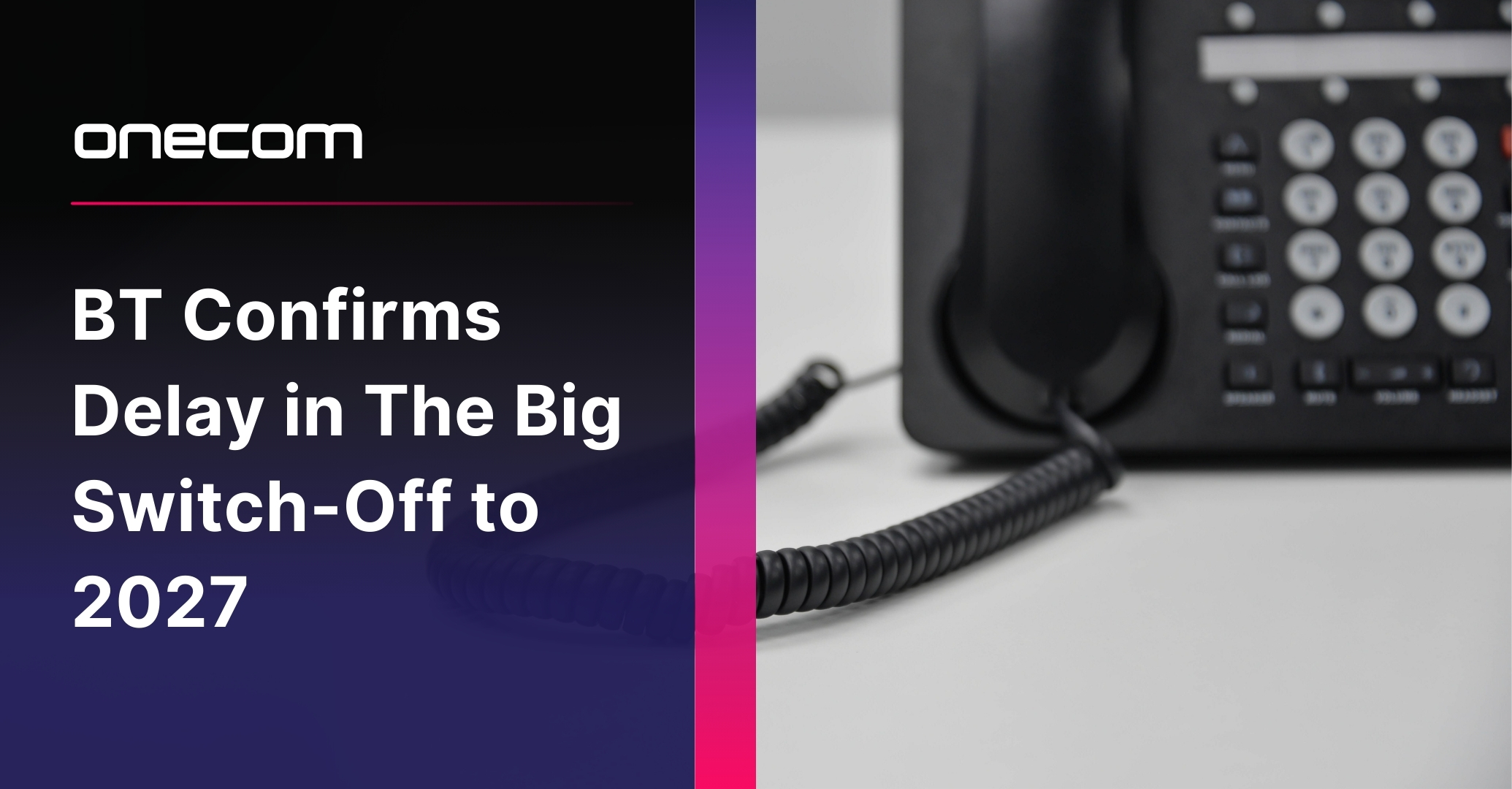In a recent announcement, BT confirmed that the switch-off of lines will now occur by January 31, 2027, rather than the original deadline of December 2025 – this includes the switch-off of Public Switched Telephone Network (PSTN) and Integrated Services Digital Network (ISDN). This delay is a significant development for businesses and individuals alike, and it's essential to understand what it means for your operations.
As we continue to transition from analogue to digital landlines, Onecom intends to keep our customers informed about the latest developments in the UK's full-fibre future. For those who are currently using analogue (PSTN) or ISDN lines for calls, alarms, fax machines, PDQ machines, CCTV or to support your broadband services, these will need to be replaced with digital solutions.
In addition to Wholesale Line Rental (WLR), a service provided by BT which allows businesses to rent lines from the BT network. These lines are used for various purposes such as voice calls, data transmission, and internet access. WLR is often used by businesses to provide a reliable and secure connection for their operations. With WLR, businesses have a dedicated connection to the BT network, which allows them to control their own communications infrastructure.
Why the Delay?
The delay is primarily due to the need to ensure a smoother transition for vulnerable customers and those with additional needs. The extra time allows for a more comprehensive approach to migrating these identified vulnerable customers to digital landlines, ensuring they receive the necessary support and equipment to maintain their connectivity.
Specifically, the delay is a response to concerns raised by vulnerable individuals who rely on telecare devices, including personal alarms, which stopped working during the initial switch-off process. Nearly two million people in the UK currently use personal alarms which rely on landlines. Therefore, this revised timeline aims to address these concerns and provide a more stable transition for these critical services.
Additionally, the delay provides more time for BT to work with suppliers and partners to ensure a seamless transition for all customers. This includes:
- Completing the necessary testing and validation of new digital landline solutions to ensure they meet the required standards and compatibility with existing systems.
- Resolving any outstanding technical issues that may arise during the transition process.
- Conducting thorough quality assurance checks to guarantee that all services are fully functional and meet customer expectations.
What does the switch-off delay mean for Onecom customers?
While the switch-off delay is a welcome development, as it provides more time for Onecom to support our vulnerable customers, we intend to remain steadfast in our transitioning of every customer.
As Onecom customers, you can rest assured that we're committed to supporting you throughout this transition, as we utilise this additional time to continue to enhance our services and support you even better.
The delay is a relatively short extension of 13 months, so we will continue working closely with you to ensure a smooth transition. We are committed to providing ongoing support and guidance from our team as we work together to migrate your services.
Behind the Scenes: Enhancing Onecom Services
In the background, we are working on some exciting updates to improve our services. This includes streamlining our processes to better serve customers who may require additional assistance. Onecom continues to refine our approach to ensure a smooth and tailored transition for all customers, aligning with our commitment to social responsibility and industry best practices.
As always, we are committed to keeping you informed about the PSTN switch-off and any changes that may affect your services. If you have any questions or concerns, please don't hesitate to reach out to our team – we are here to support you every step of the way.
Looking for expert guidance on your next steps? Onecom’s guide, “Switching to Cloud Telephony”, is packed with valuable insights and practical advice to help you navigate this transition with confidence.
Alternatively, contact your account manager today to discuss your migration options.
